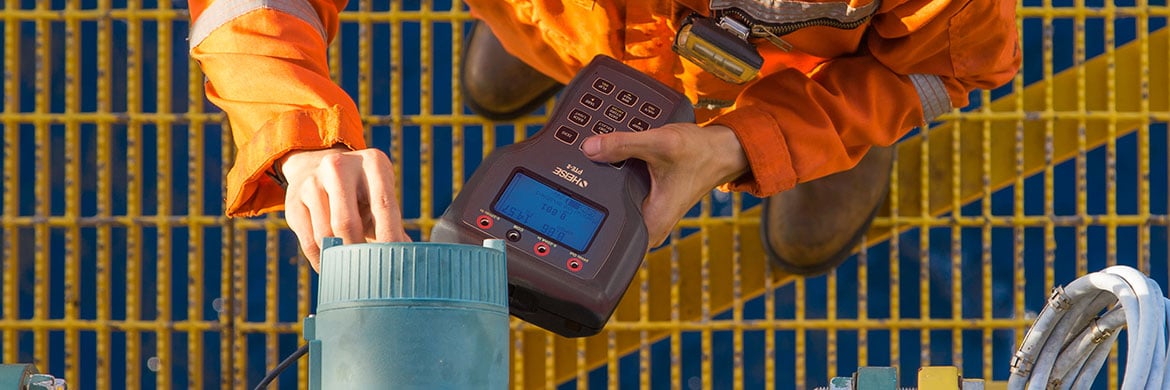
Custody Transfer: How To Get It Right
Heise | Calibration | Handheld Calibrator | Natural Gas
When you buy ten gallons of gasoline for your car at a price of $3.00 per gallon, how do you know that you’ve actually received ten full gallons for your $30.00 investment? All you can do is trust the integrity and accuracy of the gasoline pump. In other words, you are at the mercy of the measurement device. The same is true for any fluid, including natural gas, that may change ownership several times before it reaches the consumer. Now you can see why instrument accuracies are critical. A measurement error can lead to a customer receiving less than they paid for or a supplier loosing revenue because they are undercharging.
So how is the volume of a transferred fluid measured?
“Custody transfer” is the point at which a volume of liquids or gases changes ownership, i.e. the point of sale. Since the customer is paying a set price per unit/volume, it is critical that the volumetric measurement of the transferred fluid is accurate. When a fluid passes from the seller to the purchaser, it is routed through a measuring device that serves as a cash register. Two primary forms of instrumentation are used to quantify the billable volume. The first are electronic flow meters that use the volumetric flow rate, static line pressure and temperature to determine the actual volume of gas transferred. EFMs come in many forms, each type derives its measurement capability from a different principle of physics. The other requires the installation of an engineered restriction (a.k.a. primary element) inside the pipe and a differential pressure (DP) instrument (secondary element) to gage the pressure drop across the restriction. That value can then be inserted into Bernoulli’s equation to calculate the flow.
What is the calibration process to ensure accuracy?
In applications where the buying and selling of a commodity such as natural gas is taking place, calibration checks are a fiduciary responsibility. These transfers are also regulated in most countries and affect government taxation, and contractual agreements. To ensure that the calibration certificates are authentic, often third-party companies are hired to audit calibration processes.
Regardless of the type of measurement device used, a calibration procedure must be established. The documentation must include test procedures, specifications for the test device, designated calibration intervals, records maintenance and much more. Industry standards and government regulations will dictate much of the content, including how accurate the test instrument must be.
What kind of a “master” instrument should I use as a calibration standard?
So to perform wellhead calibrations, a very accurate standard will be necessary. How accurate? Most governing agencies recommend that the test instrument be four times (4X) more accurate that the device under test. This factor, called Test Uncertainty Ratio or TUR, might vary according to applications. For example, by using a TUR of four, the effect of the error in the test instrument is reduced to a small percentage of the device under test and may be considered insignificant. The preferred instrument for field calibration usually comes in the form of an electronic handheld device that measures pressure and temperature and carries FM, CSA or ATEX approval ratings for intrinsic safety. This will allow it to be used in the hazardous environments that exist at a wellhead.
A handheld calibration instrument such as the Heise® PTE-2 is a common choice for these applications. With two side-by-side module bays, pressure sensors of various ranges can be quickly inserted and swapped. They are available in accuracies as high as +/-0.025% of span. RTD or thermocouple modules are available for temperature measurement. Datalogging allows the user to store and upload the time-stamped calibration data for future reference. Since the calibration that is performed is only as good as the integrity of the calibrator, it too must be calibrated on a more intricate standard of even greater precision. The resulting calibration should be affirmed by a certificate of calibration and include traceability back to the standards bureau designated in the procedure. In the United States, that is the National Institute of Standards Technology (NIST). All PTE-2 components that are calibrated at the factory include “as left” calibration point data and NIST certification. Calibration in a dedicated ISO17025 standards lab can also be performed and certified accordingly.
Most often (and whenever practical), the test instrument (or think of it as a “master gauge”) must be four times more accurate than the device under test.
OK, so what’s the calibration procedure?
Wellhead calibration procedures are fairly straightforward. The technicians will isolate the transfer piping section that contains the flow measurement device, and introduce pressure. With the calibrator sensors plumbed into the high and low pressure taps in the system, they will introduce pressurized inert gas. The last step is to simply compare the measurements from the flow measurement device to the digital display on the calibrator. If the readings differ, they will adjust the flow device to match the calibrator.
So now you know. The two most crucial parts are an appropriate, detailed procedure and an accurate and reliable certified test instrument. There is no room for inaccuracies. Over time, erroneous measurements will result in a significant monetary loss, for either the buyer or the seller. And nobody wants that.
Please call us at (203) 385-0229 if you’d like to learn more about using the PTE-2 calibrator to check your flow instruments. We’re be happy to help, it’s what we do every day.
To learn about the PTE-2



